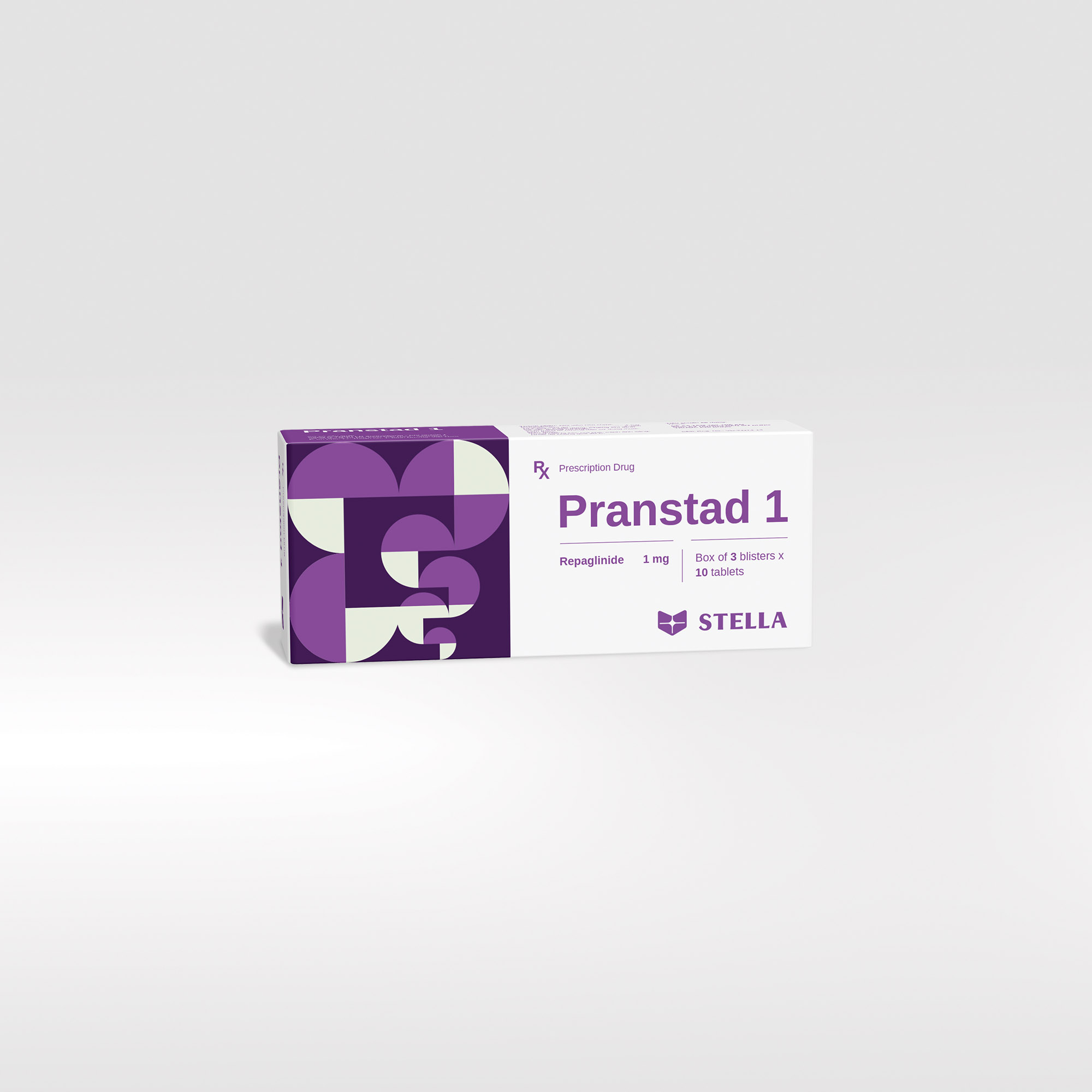Pranstad 1 Rx
Repaglinide lowers blood glucose levels by stimulating the release of insulin from the pancreas. This action is dependent upon functioning beta-cells in the pancreatic islets.
| Pack size | Box of 30 tablets, 60 tablets |
| Shelf-life | 36 months |
| Composition | Repaglinide |
| Dosage forms and strengths | Tablet: 1 mg |
Product code :











